How to Make Any Bathroom Look Bigger (and We Mean Any)
These experts prove that you don't have to tear down the walls to create the spalike retreat you've been dreaming of.
By Candace Braun Davison
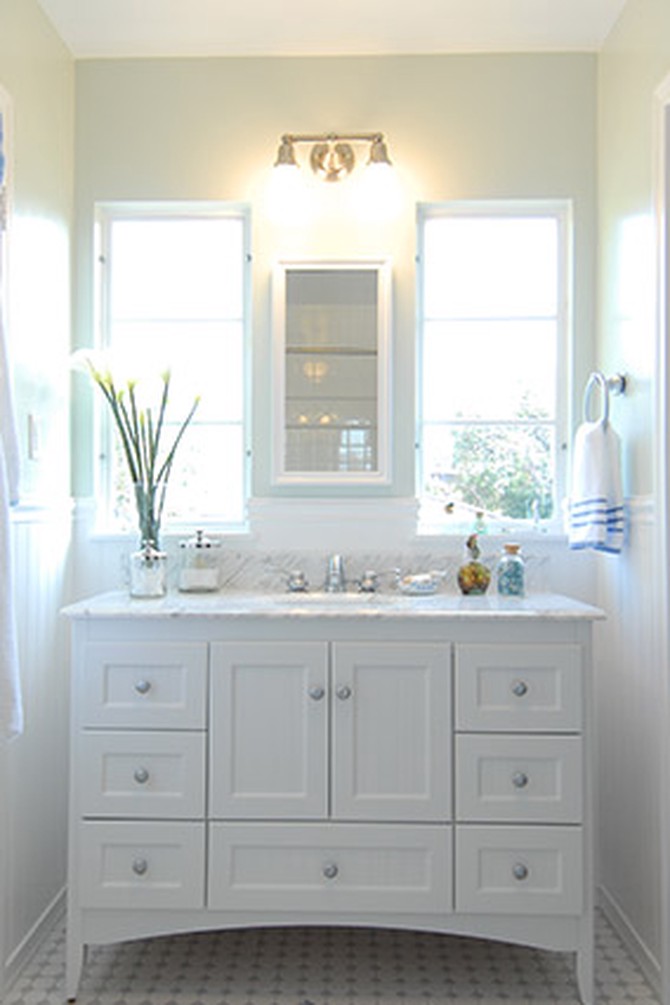
Photo: Rod Foster/One Week Bath
Try an Antique
Have you ever noticed that a lot of decorators put a spindly-legged chair or side table in the bathroom? It's not just a prop for holding a pile of picturesque, perfectly folded towels; it can make the room feel larger, too. You can see under the chair's legs, which creates the illusion that it's not taking up nearly as much space as, say, a shelf; and, it works just as well. Cabinets with legs are equally effective, says Matt Plaskoff, OneWeekBath.com founder and former consultant for Extreme Makeover: Home Edition.
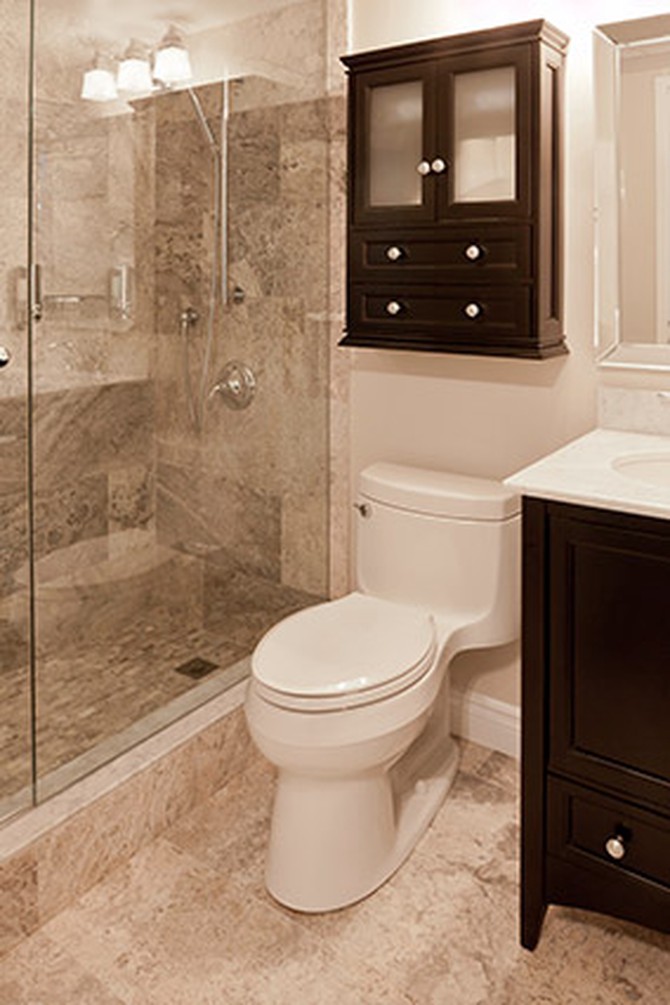
Photo: Thinkstock
Be Clear (When It Comes to Glass)
Many people choose an opaque shower door to add a sense of privacy, but doing so can also chop your space in half, divvying the bathroom up into a shower space and a sink area. A clear glass door opens up the bathroom, making it feel like one big room explains Plaskoff. (In most cases, you're alone in the bathroom, anyway, so the opacity isn't all that necessary.)
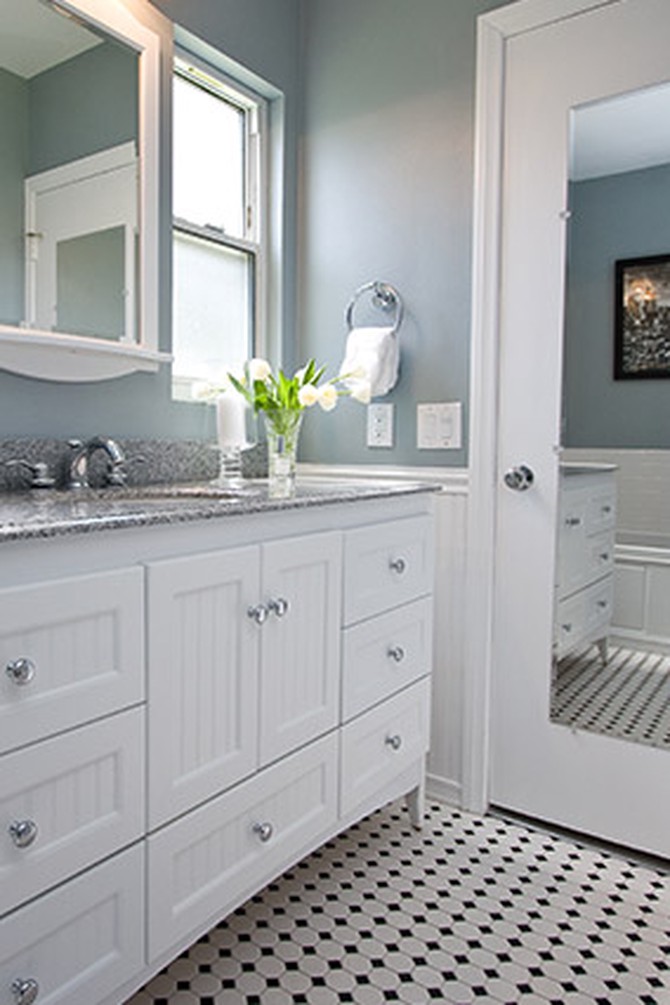
Photo: Rod Foster/One Week Bath
Save a Few Crucial Inches
Bathroom vanities tend to be either 21 or 18 inches deep, says Plaskoff. Those 3 inches may not seem like much, but they can expose a whole extra row of tile, making the room appear a bit bigger. If you really want to maximize your space, try a pedestal-style vanity, Plaskoff says.
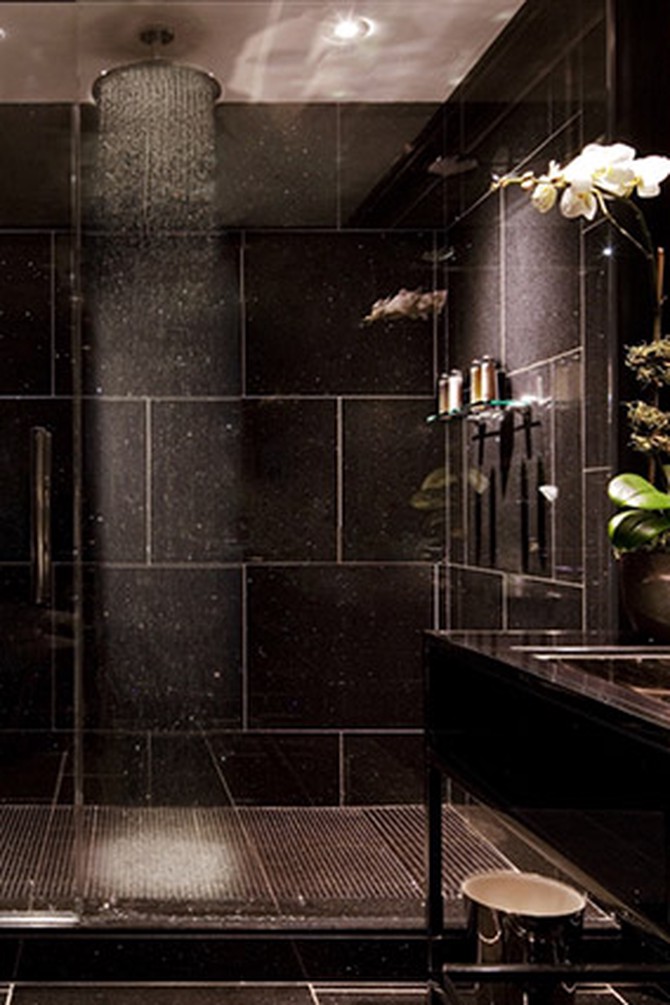
Photo: Courtesy of The Chatwal New York
Avoid Small Distractions
Gleaming tiles reflect light, which can brighten the room and make it seem bigger—unless you're using mosaic, penny or any tile design smaller than your palm, really. These tiles have more grout lines and look busy, says Joel Freyberg, general manager of The Chatwal New York, which earned top honors as Best Bathroom at the 2011 Hospitality Design Awards. The larger and simpler the tile design, the less you'll feel like your walls are shrieking, "60 square feet!"
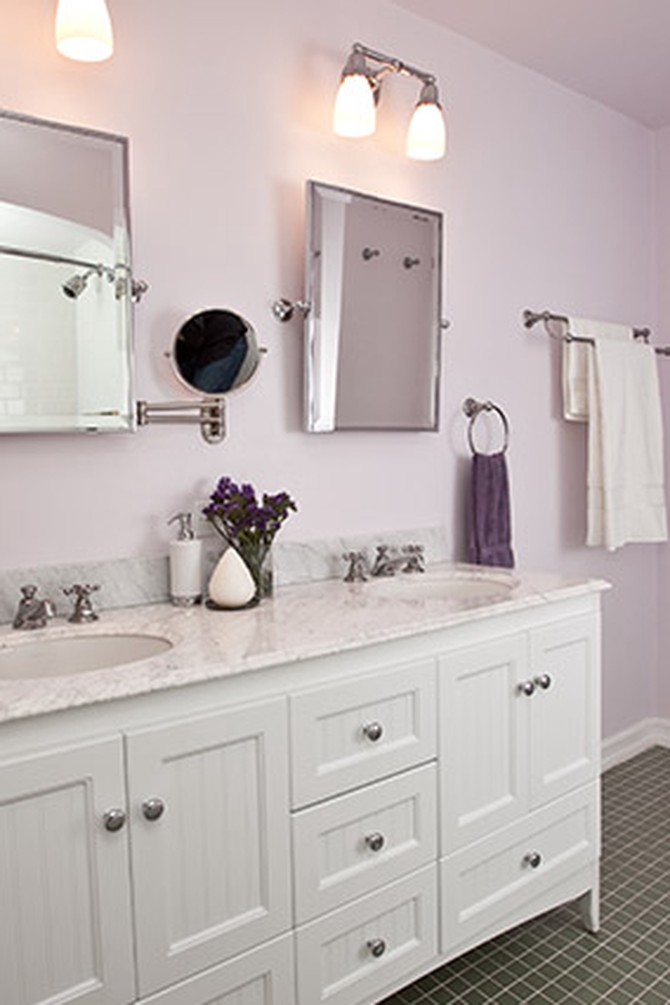
Photo: Rod Foster/One Week Bath
Keep Supplies Low
When it comes to storage, Plaskoff has one rule: Keep everything below waist level. "In a small space, cabinets and shelves protruding from the walls just box you in," he explains. The room feels cluttered and jammed, even when all of those face creams and spare toilet-paper rolls are hidden from sight. (If you love an eye-level medicine cabinet, get one that recesses into the wall).
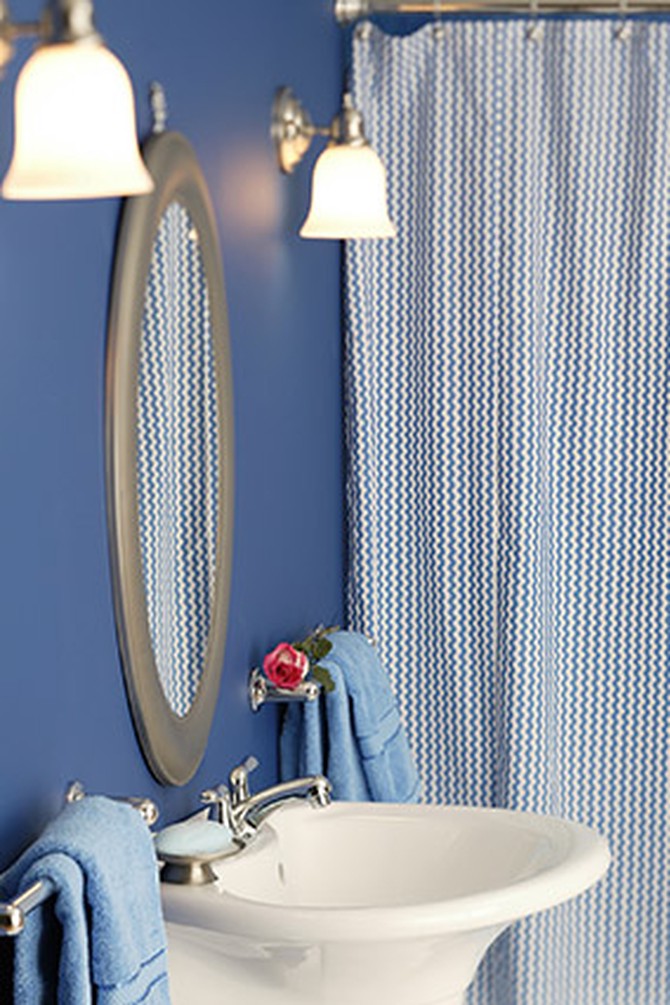
Photo: Thinkstock
Switch to More Romantic Lighting
You may be tempted to light up every corner, but that strategy often backfires, says designer and Homepolish co-founder Noa Santos. Having a few shadows gives your eyes a sense of what's near and far—and when your farthest wall is just as bright as the one closest to you, the walls can look as if they're closing in. Instead, use a dimmer on the overhead fixture (set to half-light), which gives the room a general glow; then wall sconces near the mirrors, which can focus light and reflect it, maximizing the sense of space.
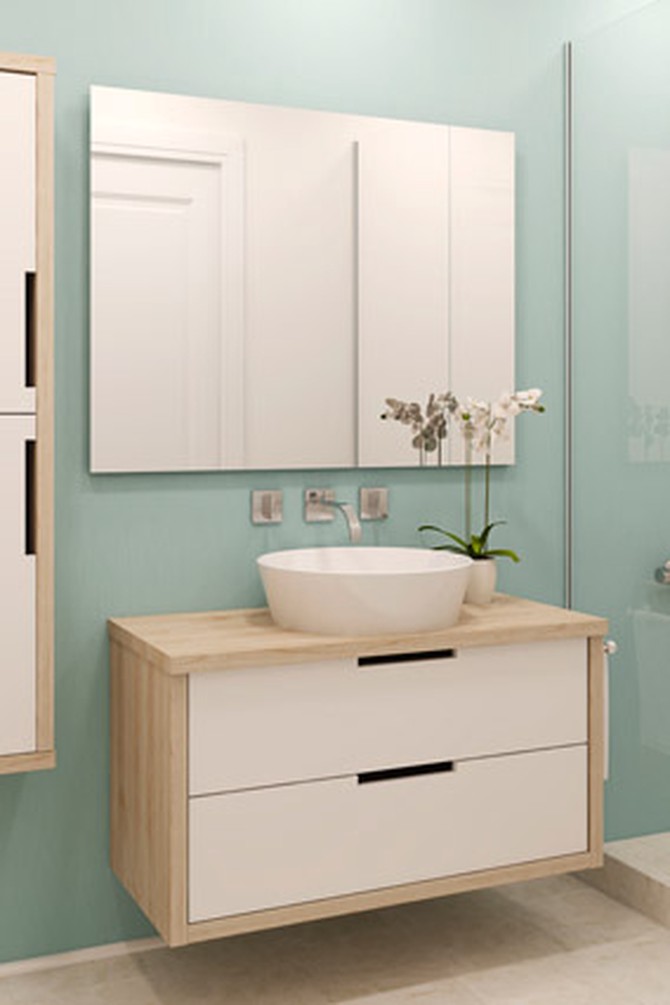
Photo: Thinkstock
Hide the Mat
Your bath mat adds color to the room, but it can also section off the floor, so you're acutely aware of the mat-covered and bare-tile areas. Storing the bath mat when you're not taking a shower is a good way to clear up the floor space, Santos says. If you have a bathtub, you can hang the bath mat off its edge, hiding it behind the shower curtain.
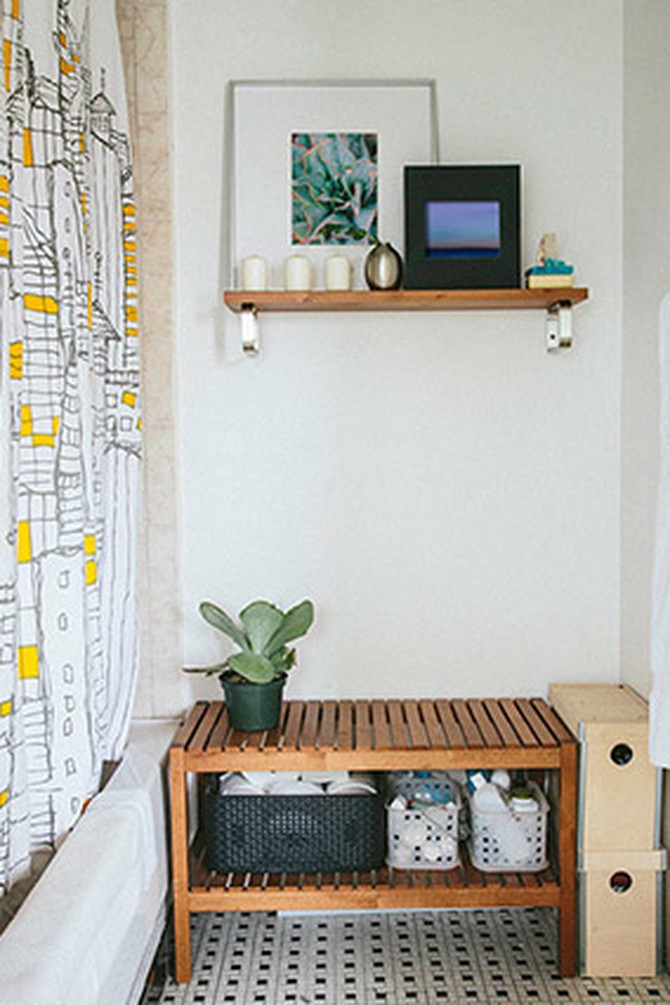
Photo: Homepolish
Raise the Bar
Your shower curtain can go a long way in opening up your bathroom, creating a (paint-free!) pop of color that catches your eye and draws your gaze across the room, says Santos. Plus, if you use a grommet-top curtain and raise the bar so the curtain is as close to the ceiling as possible, the walls will seem that much taller.
Next: How to give your bathroom a quick facelift
Next: How to give your bathroom a quick facelift
Published 02/14/2014

